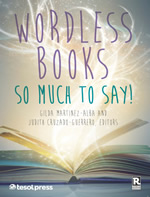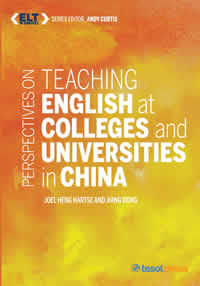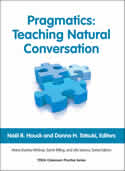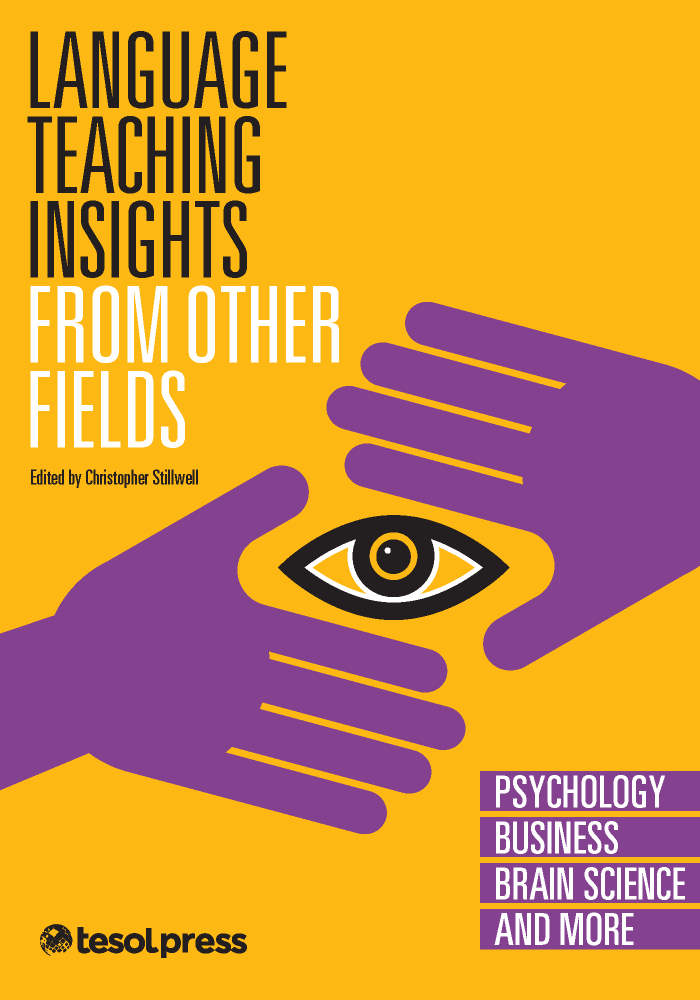Quick Tip: Introducing Introductions: Tips for Composition Teachers
by Michelle Overholt
Audience: ESL teachers working with upper-level students
In academic writing, a decent introduction ushers a reader into the “meat” of a piece of writing, but a great introduction makes the reader feel he or she is truly in capable hands. Help your students write introductions with increased flexibility and a more natural voice with a few tips.
Many introductions are born from the basic formula, “hook, connect, thesis.” But it takes more than a simple three-word prescription to help students write an introduction that will truly grab and hold the reader’s attention. What’s more, students need to understand that the style we teach (starting off with an interesting fact/statistic, historical background, funnel, story/description, etc.) is ingrained in American culture, and these habits will serve them well in public speaking class and even in conversation, not just composition classes. Here are a few ideas to try with an upper-level composition class.
1. Add a Step
Many textbooks teach introductions as “hook à connecting information à thesis.” Sometimes this results in a thesis that feels unconnected or “jerky” compared to the rest of the intro. To help writing sound more natural, try adding a step to the introduction equation: “hook à explain à focus à thesis.” In the “focus,” students should begin to introduce the real focus or more specific topic of the essay, but not quite get to the specificity of the thesis yet. Many essays do not even mention the real topic of the essay until this point, late in the intro but before the thesis, but textbooks rarely include this guidance for students.
2. Force Flexibility
When getting students started on an essay, give an assignment that asks for two or three totally different introductions for the same essay, using different “hook strategies.” It may help to provide examples so that students can see that this is possible. (For a personal essay on “A Person Who Influenced Me,” you could provide examples including one funnel introduction discussing the influence of mentors in general, one with historical background about what was happening in your life when you met this person, and another discussing a fascinating quote this person told you.) The next class, students can share their alternate intros with a partner and discuss which is better, and why.
3. Use the Radio
Often, stories on NPR use one of these strategies to lead into a news story. Find a few of these stories (making sure that the use of a “hook strategy” is clear) and post them on your LMS and/or play them for your students. At first, just have them listen and see if they can identify the strategy used. Then provide the transcript so they can make sense of any difficult words and discuss how the strategy used gets the attention of the listener. Continuing idea number two, “forcing flexibility,” you could also have the students write or even perform an alternative introduction, with a different strategy, for the same news story.
A few good stories to use: “From the Gridiron to the Pool: Women are Making Waves in Sports” (funnel), “The Weatherman Who Couldn’t Foresee the Storm” (historical background), and “High Schoolers and Snooze Buttons: A Public Health Crisis?” (surprising fact), all from 8 August 2015.
With plenty of good examples and practice, students can confidently write to grab the attention of their readers.
Michelle Overholt is an associate professor and EAP director at Donnelly College in Kansas City, Kansas.
TC Monthly Giveaway Congratulations to Dinorah Sapp, of Oxford, Mississippi, USA for being the winner of the December 2015 TESOL Connections Monthly Giveaway. Dinorah has won a free TESOL membership renewal.
This month, TESOL is giving away
a free copy of
Wordless Books: So Much to Say!

Enable your students to be successful regardless of their literacy levels. Wordless books help to develop oral language, listening, vocabulary, and so much more! With wordless books, K–12 and adult students can be authors and write stories that they interpret from the pictures. In addition, the lesson ideas are aligned with the Common Core State Standards for English Language Arts and with the TESOL Pre-K–12 English Language Proficiency Standards. Sample rubrics are included in the book and online as editable documents.
Click here to enter
Drawing closes 24 February 2016, 11:59 pm EST
TESOL Blogs Interested in writing a blog for TESOL?
Read the submission guidelines and send us your post!
Check out the latest TESOL Blogs:
|
Charting a Course Through Graphs, Charts, and Other Organizers, by Nathan Hall
 If your school is like mine, your administrators are constantly evaluating various data to give everyone something to discuss on the in-service days. All of these facts gets condensed into an easy graphic with lines, bars, or fractionally divided slides presented on a PowerPoint and projected or passed out on handouts. All it takes is a little explanation and we can get a snapshot of what’s happening and where it’s headed. If your school is like mine, your administrators are constantly evaluating various data to give everyone something to discuss on the in-service days. All of these facts gets condensed into an easy graphic with lines, bars, or fractionally divided slides presented on a PowerPoint and projected or passed out on handouts. All it takes is a little explanation and we can get a snapshot of what’s happening and where it’s headed.
While it’s easy to take for granted that graphic organizers are easy alternatives to large chunks of text, we have to remember that these could be very confusing to ELLs. Other cultures may not use the same layouts we use, different schools the students previously attended may not have incorporated these into the curriculum, or the whole process of how to make sense of weird words and lines may be overwhelming. So, as ELL teachers, we may want to take the time to go over how charts and graphs work as a part of academic language.
Some ways to make this happen are to: Read More. |
|
In Defense of the 5-Paragraph Essay, by Robert Sheppard
 In a recent post over at Talks With Teachers, Brian Sztabnik puts a price on the head of the 5-paragraph essay. Torch it, bury it, at all costs, make it go away. Why this bounty? Well, the gist of the argument is that, of all the great writing we read, virtually none of it is in the form of a 5-paragraph essay. The primary goal of education, says Sztabnik, is “to cultivate young minds to be thoughtful, versatile, and never satiated.” It’s a good post, and even better is the follow-up, which proposes authentic writing as an alternative. In that second post, nine teachers share what authentic writing means to them, along with a favorite authentic writing assignment. There are some fantastic ideas there, and I highly recommend reading both. In a recent post over at Talks With Teachers, Brian Sztabnik puts a price on the head of the 5-paragraph essay. Torch it, bury it, at all costs, make it go away. Why this bounty? Well, the gist of the argument is that, of all the great writing we read, virtually none of it is in the form of a 5-paragraph essay. The primary goal of education, says Sztabnik, is “to cultivate young minds to be thoughtful, versatile, and never satiated.” It’s a good post, and even better is the follow-up, which proposes authentic writing as an alternative. In that second post, nine teachers share what authentic writing means to them, along with a favorite authentic writing assignment. There are some fantastic ideas there, and I highly recommend reading both.
But there’s a but, or, rather, a however. You knew it was coming. And here it is: Read More. |
|
5 Sources of Support for New TESOL Teachers, by Kristen Lindahl
 In my previous blog entry, I posed some ideas for helping future TESOL teachers transition from the role of student to teacher. To follow up on that, I focus this entry on the next step: how to support those new TESOL educators once they are in the workforce and heading up their own classrooms. In my previous blog entry, I posed some ideas for helping future TESOL teachers transition from the role of student to teacher. To follow up on that, I focus this entry on the next step: how to support those new TESOL educators once they are in the workforce and heading up their own classrooms.
Below are five online resources that focus on providing support for new teachers in different ways: the first two are sites that provide both classroom tools and online communities to help out new teachers; the third is a letter by a teacher to teachers to help them imagine their future. Read More. |
|
3 New Year’s Activities, by Elena Shvidko
 Happy New Year! It’s a great time to start a new semester with a holiday-related activity that would help your students to get to know each other and practice English. I thought I would share a few activities that you could do during the first week of classes. Happy New Year! It’s a great time to start a new semester with a holiday-related activity that would help your students to get to know each other and practice English. I thought I would share a few activities that you could do during the first week of classes.
Activity 1. Collage: The Year in Review
For this activity, you should have 1) several magazines and other periodicals with pictures, 2) scissors, 3) glue, and 4) papers (format A4) according to the number of the students. Each student will receive each of the above materials. The task is to create a picture collage—a personal overview of the previous year in pictures, that is, major activities and events, interesting stories, and highlights. Read More. |
TESOL Bookstore

Featured Resources from TESOL Press
 Perspectives on Teaching English at Colleges and Universities in China Perspectives on Teaching English at Colleges and Universities in China
Joel Heng Hartse and Jiang Dong
Co-authored by a Chinese teacher of English in China and an American teacher of English who worked in China, this text is a powerful example of international collaboration and highlights one of the distinctive features of the ELT in Context Series.
 Pragmatics: Teaching Natural Conversation Pragmatics: Teaching Natural Conversation
Donna H. Tatsuki and Noël R. Houck
This text offers materials and techniques for guiding learners past grammar into authentic-sounding utterances and sequences. Teachers will find a range of pedagogical activities to put to immediate use in the classroom as students learn to move past the scripted unnatural dialogue provided in traditional textbooks. Includes additional online resources.
 Language Teaching Insights From Other Fields: Psychology, Business, Brain Science, and More Language Teaching Insights From Other Fields: Psychology, Business, Brain Science, and More
Christopher Stillwell
What could language teachers learn from neuroscientists, economists, and a myriad of other professionals? This book explores and seeks inspiration from beyond routine contexts. The chapters, written by language teachers with extensive experience in other fields, yield surprises that translate to new ways of thinking about teaching and the classroom. Language teachers who open this book tap into a living library of their colleagues' knowledge and experiences.
|
| ADVERTISEMENT |
 |
 |
|